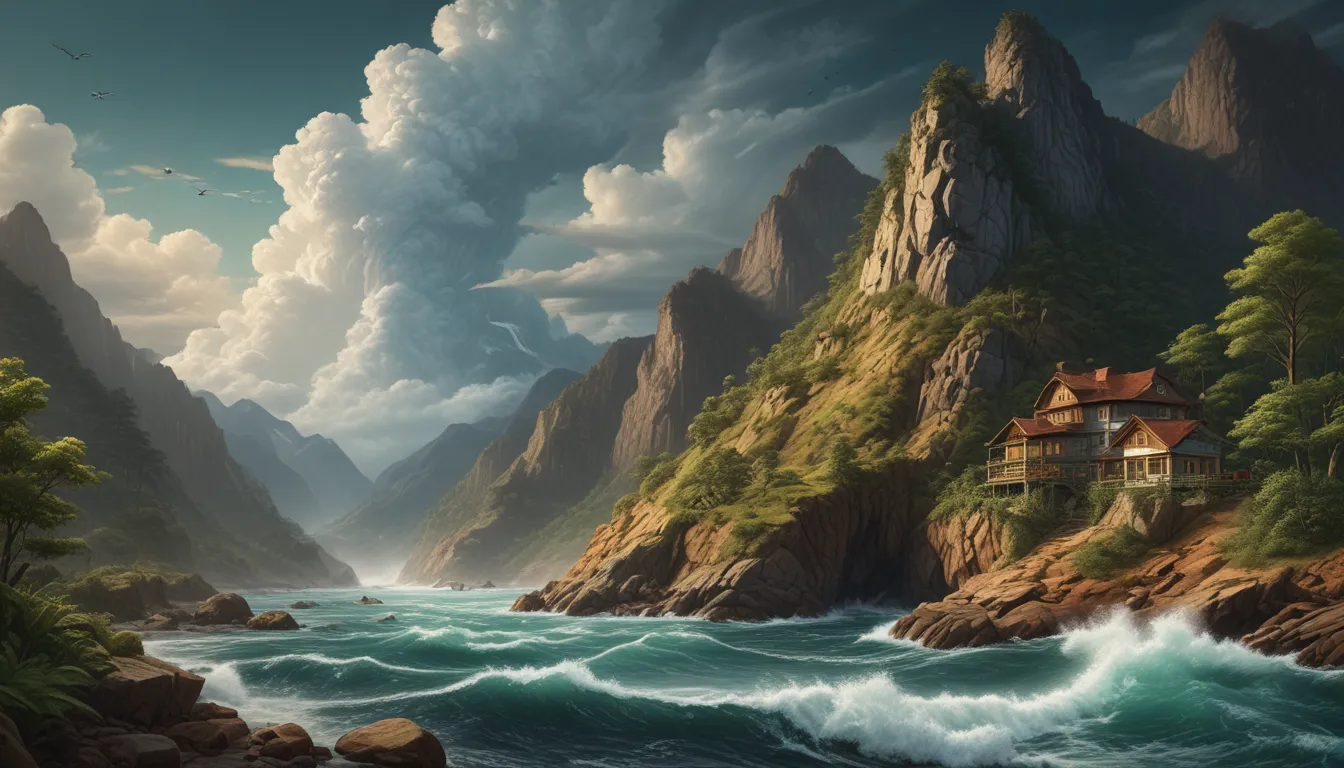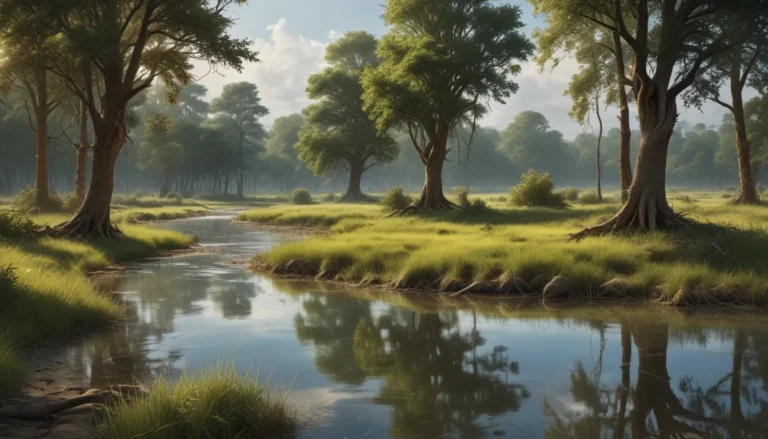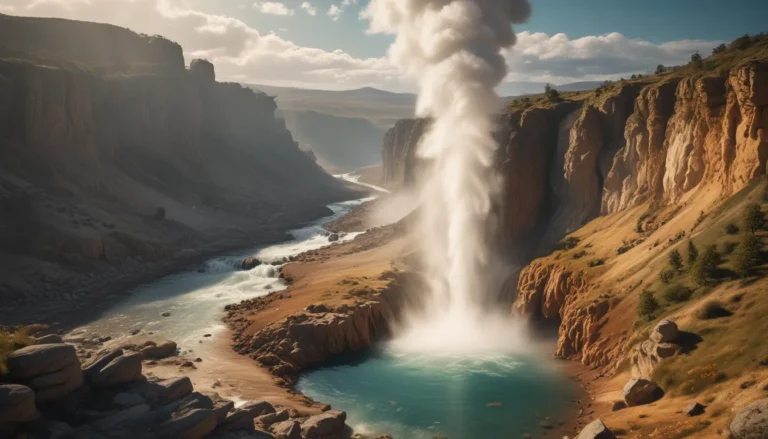A Note About Images: The images used in our articles are for illustration purposes only and may not exactly match the content. They are meant to engage readers, but the text should be relied upon for accurate information.
Nature is an awe-inspiring force that exhibits raw power and potential dangers, from earthquakes to hurricanes, floods to wildfires. These natural hazards can wreak havoc on the environment and put human lives at risk, leaving a lasting impact on affected areas. In this article, we will delve into 19 mind-blowing facts about natural hazards that showcase the sheer magnitude and unpredictability of these events. Join us on a journey to discover the wonders and dangers that exist within our natural world.
Understanding Natural Hazards: A Closer Look
- Natural hazards such as earthquakes, hurricanes, and wildfires are powerful forces of nature with devastating impacts on people and the environment.
- Recognizing the risks associated with natural hazards is crucial for communities and individuals to prepare and safeguard lives and property from their immense power.
The 1931 China Floods: A Devastating Tragedy
- The deadliest natural hazard in recorded history is the 1931 China floods, caused by the overflowing of the Yellow River.
- These catastrophic floods resulted in an estimated death toll of 1 to 4 million people, leaving a tragic mark in history.
The 1960 Great Chilean Earthquake: A Record-Breaking Event
- The largest earthquake ever recorded was the 1960 Great Chilean earthquake, boasting a magnitude of 9.5.
- This massive quake unleashed tsunamis that traveled as far as Hawaii, Japan, and the Philippines, showcasing its immense power.
Tropical Cyclones: Known by Many Names
- Tropical cyclones are referred to by different names in various parts of the world – hurricanes in the Atlantic and Eastern Pacific, typhoons in the Western Pacific, and cyclones in the Indian Ocean.
- These intense storms are a force to be reckoned with, bringing destructive winds and heavy rainfall in their wake.
Lightning Strikes: A Common Natural Phenomenon
- Lightning strikes are a common natural hazard, with approximately 25 million strikes hitting the ground each year.
- These strikes can lead to fires and fatalities, highlighting the dangers posed by this electrifying phenomenon.
Volcanic Eruptions: Unleashing Nature’s Fury
- Volcanic eruptions can release massive amounts of ash and gas into the atmosphere, impacting the global climate.
- The eruption of Mount Tambora in 1815 led to a year without a summer, causing widespread crop failures and famine across the globe.
Tornadoes: Destructive Forces of Nature
- Tornadoes are some of the most destructive natural phenomena, with the United States experiencing more tornadoes than any other country.
- On average, over 1,000 tornadoes occur in the US each year, leaving a trail of devastation in their path.
Droughts: A Prolonged Natural Challenge
- Droughts can have severe consequences for agriculture and water supplies, leading to crop failures and water shortages.
- The longest recorded drought in history lasted for 400 years in the Atacama Desert in Chile, showcasing the prolonged impact of these events.
Tsunamis: Giant Waves of Destruction
- Tsunamis are massive ocean waves that can travel at the speed of a jet plane, reaching speeds of up to 500 miles per hour in the open ocean.
- These powerful waves can cause widespread devastation when they make landfall, highlighting the need for early warning systems and preparedness.
Landslides: Triggered by Various Causes
- Landslides can be triggered by earthquakes, heavy rainfall, or human activities, posing a significant threat to communities.
- The largest recorded landslide occurred in Mount St. Helens in 1980, with a volume of approximately 2.9 cubic kilometers, showcasing the massive scale of these events.
Wildfires: Rapid Spread and Extensive Damage
- Wildfires can spread rapidly and cause extensive damage to forests, homes, and wildlife.
- The largest recorded wildfire was the 2019-2020 Australian bushfire, burning over 18 million hectares of land and highlighting the destructive power of these infernos.
Avalanches: A Threat in Mountainous Regions
- Avalanches occur in mountainous regions and can reach speeds of up to 80 miles per hour.
- Snow and ice avalanches pose a significant threat to outdoor enthusiasts and residents in avalanche-prone areas, requiring caution and preparedness.
Sinkholes: Sudden Geological Events
- Sinkholes can form suddenly and swallow entire buildings, roads, and landscapes.
- The largest sinkhole ever recorded is the Xiaozhai Tiankeng in China, boasting a depth of 662 meters and a diameter of 626 meters, showcasing the incredible scale of these geological phenomena.
Heatwaves: Deadly Events in Urban Areas
- Heatwaves can be deadly, particularly in urban areas with high population density and inadequate cooling measures.
- The 2003 European heatwave resulted in an estimated 35,000 deaths across Europe, underscoring the importance of heatwave preparedness and resilience.
Earthquakes: Triggers of Secondary Hazards
- Earthquakes can trigger secondary hazards such as landslides, tsunamis, and aftershocks.
- The 2004 Indian Ocean earthquake and tsunami claimed the lives of over 230,000 people in 14 countries, highlighting the cascading impact of these seismic events.
FAQs
- What are natural hazards?
-
Natural hazards are extreme natural events or phenomena that can cause significant damage to the environment, property, and human life.
-
Are natural hazards predictable?
-
While scientists have made progress in predicting some natural hazards, many remain difficult to forecast with precision.
-
How can we mitigate the impacts of natural hazards?
-
Mitigating natural hazards involves preparedness, mitigation measures, and resilient infrastructure.
-
Are natural hazards becoming more frequent?
-
Some studies suggest that certain natural hazards may be increasing in frequency and intensity due to climate change.
-
How can individuals prepare for natural hazards?
- Individuals can prepare by creating emergency plans, assembling kits, staying informed, and following instructions during emergencies.
Conclusion: Embracing the Power of Nature
Natural hazards are a testament to the awe-inspiring power and unpredictability of nature, showcasing the need for preparedness and resilience in the face of these events. By understanding the risks associated with natural hazards, communities and individuals can work towards mitigating their impact and protecting lives and property. From the immense energy released in volcanic eruptions to the staggering speeds of tornadoes, these facts shed light on the forces at play in our environment. It is essential to continue studying and addressing the impacts of natural hazards through scientific research, preparedness measures, and resilient infrastructure to minimize risks and ensure the safety of all.
Our commitment to delivering trustworthy and engaging content is reflected in the diverse insights and information shared by real users. Each fact is meticulously reviewed by our dedicated editors to uphold the highest standards of accuracy and reliability. Explore and learn with us, trusting in our commitment to quality and authenticity.
By organizing the information into sections, focusing on educational content, and restructuring the facts for improved readability, this rewrite provides valuable insights into the world of natural hazards while maintaining a friendly and informative tone.






